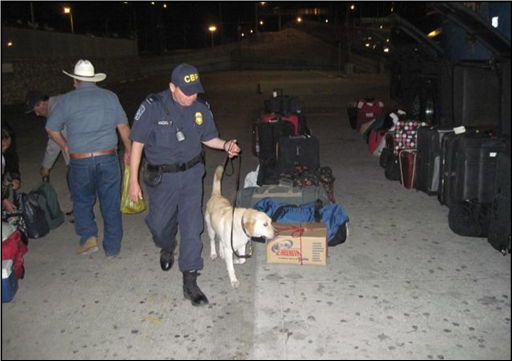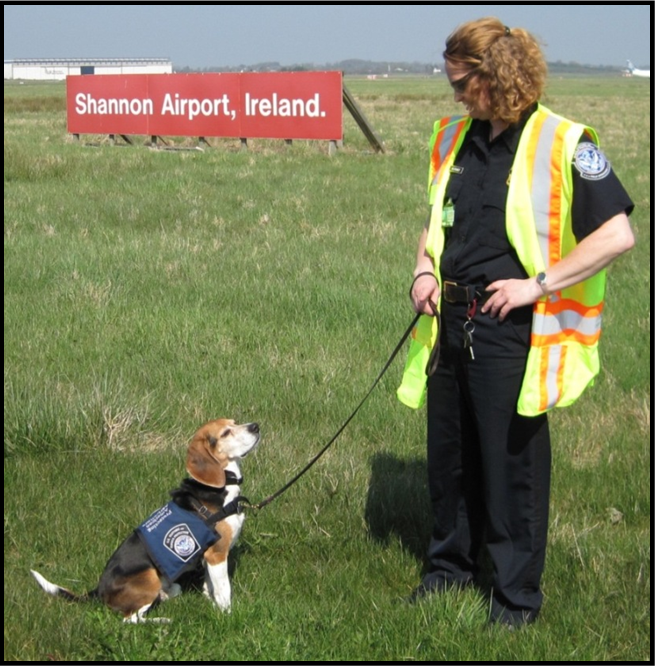Dogs have a long history of working in partnership with humans. Building on this partnership between humans and dogs, U.S. Customs & Border Protection (CBP) detector dogs are a key tool for screening passengers and cargo to prevent the introduction of harmful plant pests and foreign animal disease from entering the U.S.
The ability to discriminate and target a specific odor, such as that of an orange or even a live snail, makes dogs an invaluable tool in detecting prohibited agricultural items hidden from view. When it comes to finding prohibited fruit, vegetables, plants, and meat products from high-risk countries, the nose knows. A trained agriculture dog can scan a piece of luggage for smuggled or forgotten fruits in mere seconds. Understandably, it takes an officer much longer to open and visually inspect the same bag.
In 1984, the U.S. Department of Agriculture (USDA) established its detector dog program Beagle Brigade” at the Los Angeles Inter-national Airport with one beagle trained to sniff out plants and animal products in luggage and carry-on items arriving on international flights. Beagles and beagle mixes are the preferred breed of dog at the airport because of their keen sense of smell, non-threatening size, high food drive, and gentle disposition with the public.

In 2000, USDA started using larger dogs outside the passenger environment by employing Labrador retrievers (labs), this launched the “Border Brigade” on the Mexican and Canadian borders, and “Cargo Brigade” in the CBP cargo inspection facilities at airports and seaports. In 2003, when USDA transferred agricultural inspectors to CBP, approximately 75 canine teams were included. Today, the agriculture canine program is growing to over 180 teams, providing screening at the border crossings, preclearance locations, air passenger terminals, cruise terminals, cargo warehouses, and mail facilities that process international passengers and commodities. All the detector dogs at the USDA National Detector Dog Training Center (NDDTC) are adopted from rescue shelters in the U.S. or come to the program from private donations. A facility was constructed in 2009 specifically for NDDTC near Atlanta, Georgia. The facility incorporates environmentally conscious features in accordance with the Leadership in Energy Environmental Design certification by the U.S. Green Building Council.

Before the selected beagles or labs can start their specialized work, they have to be trained. All CBP agriculture canine officers and their canine partners complete the initial 10-13 week CBP Agriculture Specialist Canine Training at the NDDTC. Training and evaluation continues at the team’s home port to maintain their skills. Depending on the working environment, the dogs are trained to give either a passive/sitting response or an active response by pawing to indicate the presence of an agricultural product. Regardless of the behavioral response, food (dog treats) and positive praise from their handler is the reward that increases their proficiency.

In addition to their important detection work, agriculture canine teams make the public aware of the important role that agriculture plays in CBP’s overall mission and in the U.S. economy. The special role of the agriculture detector dog program in protecting American agriculture and its public appeal make it ideal for public outreach activities. Agriculture canine teams have given thousands of demonstrations to audiences of all ages. At schools, media interviews, fairs or other events, the agriculture detector dog teams are always ready to steal the show, greeting the public with happy faces and wagging tails.


